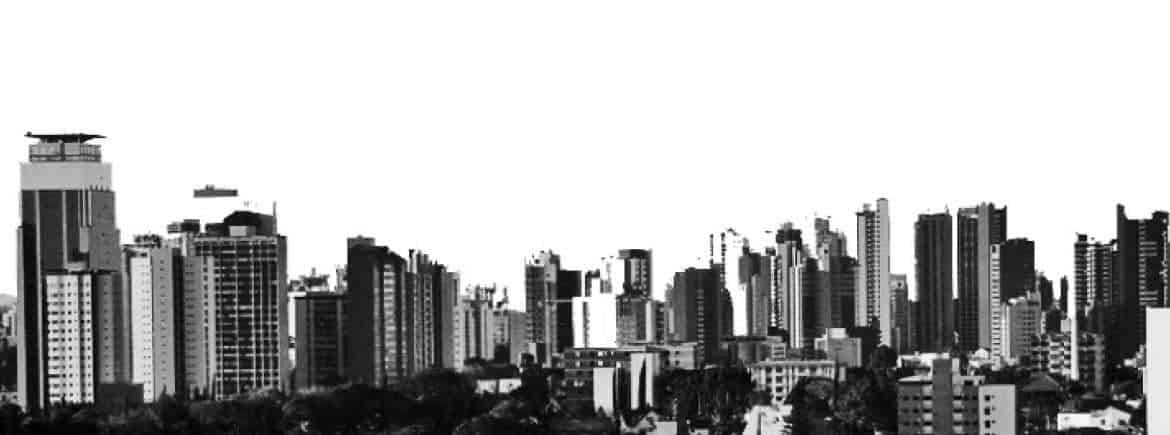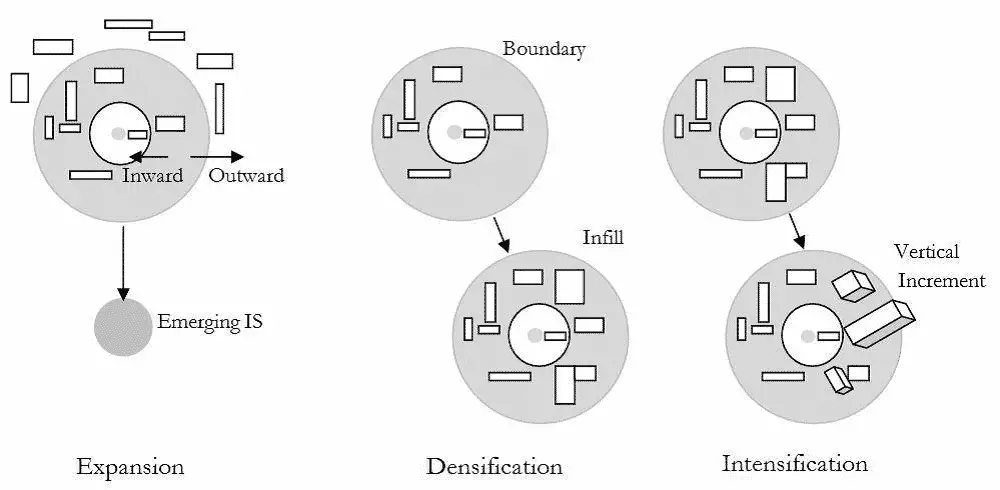Abstract: Many of the significant urban transformations of the new century are taking place in the developing world. In particular, informality, once associated with poor squatter settlements, is now seen as a generalized mode of metropolitan urbanization. This article focuses on urban informality and challenges of dealing with the “unplannable” exceptions to the order of formal urbanization. Policy epistemology are useful for urban planning concerned with distributive justice. The article also talks about the stereotypes associated with urban informal dwellers and the spatial distribution of slums in Delhi.
Typology is an important aspect of study of residential settlements especially in urban area of the developing world having varied type of house structures and the availability of basic amenities in them. The scheme of typology may differ from one person to another depending upon the purpose of the study.

https://architectureindevelopment.org/images/au/between%20formal%20&%20informal%20by%20Federica/1%20Vila%20Nossa%20Senhora%20da%20Luz.jpg
Urbanisation (‘push’ and ‘pull’ mechanism) and an ever-increasing number of informal settlements (INSEs) are among today’s most serious challenges to sustainable urban development. While, in the past, urban areas have been – and still are – places of opportunities, today, they are described as hotspots of crime and numerous challenges (Wamsler & Brink, 2014). The urban environment is highly complex in terms of growth and development (Bolay, 2006). In the developing world, there is a high rate of migration to urban areas which has further worsened the situation. The people who relocate from rural to urban areas in search for better economic opportunities such as employment often choose to settle in informal areas (Tsenkova, 2010) because of high cost of living in the cities. These people are often faced with extreme poverty and social exclusion (UN-HABITAT, 2003). Traditionally, formal and informal settlements were distinguished based on administrative definitions or socio-economic indicators (Divyani Kohli et al., 2012) such as ‘the number of people who live on a dollar a day’ (Gulyani, Bassett, and Talukdar, 2014).
These approaches of using spatial-social data have proved to be inaccurate and inconsistent because they lack a uniform global availability (Herold, Goldstein, and Clarke, 2003). Again, they tend to generalize poverty based on indicators within the administrative units. There is lack of agreed definition of slums. The terms such as ‘unplanned’, ‘illegal’, ‘squatter’, and ‘shanties’ ‘ghetto’ testify imprecise connotations. The informal settlements are defined as unplanned settlements which are setup illegally either on the public or private land in a haphazard manner without following norms or planning regulations (Ishtiyaq & Kumar, 2011). On the other hand, UN-HABITAT (2003) defines slums as urban areas where inhabitants lack one or more of the following: durable housing, sufficient living space, easy access to safe water and adequate sanitation; and security of tenure. Slums differ in size, shape, pattern and population size (Taubenbock & Kraff, 2014). Separately, informal settlements are often reviewed in the context of informality and high density housing, recognizing the fact that they incorporate predominantly informal housing developments (UNECE, 2008).
Occasionally, the informal settlements tend to cluster in inner cities and expand towards peri-urban areas. The centrality of location implies formations close to the city centre or industrial areas.
The informal settlement development undergoes various stages during its growth; that is, infancy, consolidation and saturation. Infancy is the initial stage where vacant lands often along the river banks, road reserves, and hazardous areas are occupied by slum dwellers. Consolidation is the stage between infancy and saturation. It is normally characterised by increased outward expansion, subdivision, construction, and tenancy (Sliuzas, 2008). At saturation stage, expansion stops and empty spaces get filled up with new structures. This stage is normally characterised by high overcrowding which exacerbate living conditions of slum dwellers (Sori, 2012). The figure 1 below shows three distinct and overlapping means of informal settlements growth that is, expansion, densification and intensification (Abebe, 2011). The INSE expansion can either be inward, outward or independent from an existing settlement. The key feature of the expansion process is that the settlement increases in size. The densification entails horizontal infilling of empty or unoccupied spaces within an existing boundary (increased roof coverage area). The terms such as population density and residential density are used to describe densification process. To illustrate this process, let’s consider this as: At time (t1), the residential density of a given INSE is (d1) and at time (t2), the residential density is (d2). If d2>d1 then densification has taken place assuming that there is no change in boundary of an existing Settlement. Lastly, intensification refers to vertical increment of built-up structures and it is often an internal growth along with densification i.e. the increase in floor area ratio.

Concepts of INSE expansion, densification and intensification – Adapted from Abebe (2011)
A popular stereotype is that these are isolated enclaves or ‘no-go areas’ occupied by squatters who are anti-social, uneducated and generally desperate. Another is that people opportunistically invade hazardous sites in order to leapfrog others on the waiting list for free RDP housing (Tissington et al. 2013). Such perceptions encourage a hostile response, or at least policy neglect that is based on the assumption that squatter settlements will gradually disappear as people find better housing options. One needs to identify the main drivers and dynamics at work to make sense of the phenomenon and inform good policy. This requires careful analysis of the interactions between people, places and economic activities. In particular, one must understand the relationship between household aspirations, their choice of settlement and the availability of jobs.
Based on the morphology, living condition and legal status, housing in Delhi can be classified into SEVEN types– Homeless; JJ Cluster; Resettlement Colonies; Regularized & Unauthorized colonies; Urban Villages; Walled city and extension; Planned colonies. Since these six types of settlements do not qualify to be classified as formal settlement because of lack of basic amenities, they may also be called as slums in one way or the other. The study reveals that smaller size of slum clusters is more in number and thus a major chunk of slum population live in them.
An assumption that planning regulations and standards do not only guide formal planning, but that informal urban development is also regulated by customary standards and locally negotiated rules. The term ’planning standards’, therefore, applies to legal and technical norms defined by the statutory planning system as well as to rules and standards that have emerged in informal urbanization processes. Formal planning standards are static and codified while informal planning standards are flexible and subject to change according to demand and supply, market forces, cultural and socio-economic conditions, and development stage of a settlement. Standards of informal settlements can, therefore, only be traced empirically with reference to case study settlements representing different development stages. One that rejects the notion of an informal sector and instead views informality as a mode of urbanization. The term urban informality is to indicate an organizing logic, a system of norms that governs the process of urban transformation itself (Roy & AlSayyad, 2004). The key element of today’s paradigm of “Sustainable Human Development” is the idea of enablement, helping the poor help themselves. To this end, there has been considerable emphasis on urban upgrading strategies. However, it is also important to note the limitations of urban upgrading. The limitations of urban upgrading are the limitations of the ideology of space. In such policy approaches, what is redeveloped is space, the built environment and physical amenities rather than people’s capacities or livelihoods.
Informality at first glance seems to be a land use problem and it is thus often managed through attempts to restore “order” to the urban landscape or to bring it into the fold of formal markets. However, borrowing Krueckeberg’s important insight, it can be argued that the more fundamental issue at stake in informality is that of wealth distribution and unequal property ownership, of what sorts of markets are at work in our cities and how they shape or limit affordability. In this sense, the study of informality provides an important lesson for planners in the tricky dilemmas of social justice. Informality resembles what Timothy Mitchell (2003, p. 210) calls the object of development, a seemingly natural phenomenon that is external to those studying it and managing it. However, Ananya Roy has argued, Informality, and the state of exception that it embodies, is produced by the state. This is apparent in all its various forms, from the gated, high-end informal subdivisions to squatter settlements. Planning is implicated in this enterprise. To deal with informality therefore partly means confronting how the apparatus of planning produces the unplanned and unplannable. Finally, international planning today is constituted through models and best practices. These blueprint Utopias are seen to be the key to the universal replicability of “good” planning. Confronting the failures and limitations of models provides a more realistic sense of politics and conflicts, and also forces planning to face up to the consequences of its own good action. Such outcomes must be seen as something more than simply “unintended consequences.” This vocabulary of planning not only has the flavor of a casual shrug but also implies the inability to think about the complex social systems through which plans must be implemented. These three pressing issues—moving from land use to distributive justice, rethinking the object of development, and replacing best practice models with realist critique— are not just policy epistemologies for dealing with informality. Rather, they indicate that informality is an important epistemology for planning.
Author Bio: Aashima Aggarwal is an Architect, she earned her Bachelor of Architecture degree from Dr. A.P.J Abdul Kalam Technical University,Lucknow in 2016 with merit honours in it. Currently she is pursuing her masters (M.Arch in M.Ekistics) from Jamia Millia Islamia University,Delhi. She likes writing about the topics which are a mix of urban planning and economics. Urbanscapes and informal settlements adds to her list of interest. Previously, she has worked with International Firm, Innowaves Design Services Pvt. Ltd., Noida.